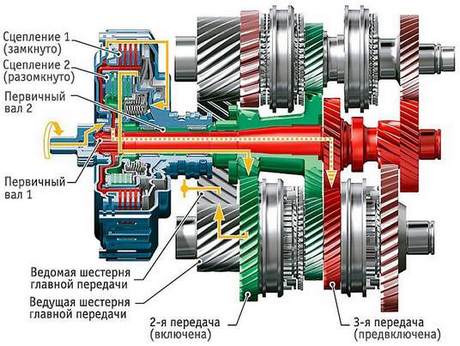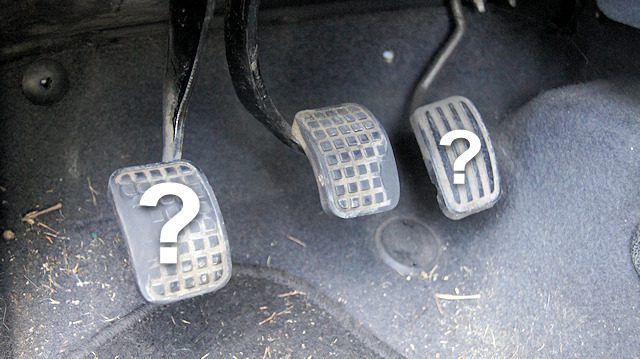
Double clutch principle and method
Content
Who hasn't heard of the famous dual clutch yet? An expression that also often rhymes with a vintage car or even motorsport ... Let's try to summarize this technique and its usefulness in this article.
Know that knowing how the gearbox works is very important here: look here if it isn't.

What does the technique consist of?
The dual clutch was necessary on older cars that didn't have a synchromesh ring in their gearbox's sliding gear. Indeed, when we change gear, we connect one gear to the engine and the other to the wheels. However, the speeds of the two do not match when shifting gears! Suddenly, the gears are hard to connect and the teeth rub against each other: then the box starts to crack. The purpose of this technique in the case of older cars is to take care of itself so that the speed of the two gears is as close as possible (to thus limit cracking). Here are the steps to follow when downgrading:

initial situation
I have a stabilized speed in 5th gear, 3000 rpm. So I hit the accelerator a little to keep the pace. Note that in the diagrams I indicate that the pedal is depressed when it is light gray. In black, there is no pressure on him.
In this situation (for example, in the case of a two-shaft gearbox), the engine is connected to a clutch, which itself is connected to the input shaft. The input shaft is then connected to the output shaft (with the desired gear ratio, that is, with a gear or other gear) by means of a sliding gear. The output shaft is permanently connected to the wheels.
So, we have such a chain: engine / clutch / input shaft / output shaft / wheels. All these elements are interconnected: if you slow down to a stop without touching anything (except for releasing the accelerator pedal), the car will stall because the engine cannot rotate at 0 rpm (logical ...).
Step 1: shutdown
If you want to downshift, the speed of the motor gear will be different from the speed associated with the wheels. The first thing to do when shifting gears is to release the accelerator. We then disengage (the act of depressing the clutch pedal) and shift into neutral instead of directly downshifting (as we usually do).
If I try to shift into gear at this point, I have a lot of problems because the engine speed will be much lower than the wheel speed. Thus, this speed difference prevents the gears from coinciding easily ...
Step 2: gas blast
I still don't move. To get the engine speed closer to the speed of the wheels (or rather the output shaft of the gearbox ...), I will then accelerate the engine by hitting the accelerator hard with the gas. The goal here is to connect the input shaft (motor) to the output shaft (s) through the player with the utmost care.
By giving “momentum”/speed to the input shaft, it approaches the speed of the output shaft. Be careful if you turn off the gas stroke, it's useless as the motor can't be connected to the input shaft (then you just give the throttle in a vacuum)...
Step 3: jump at the right time
I just turned on the gas, the engine starts to slow down (because I am not pressing the accelerator pedal). When the speed (which decreases) matches the speed of the output shaft (s), I change gears without breaking the gearbox! In fact, the ratio will tend to return on its own when the speeds between the input and output shafts are correlated.
Step 4: it's over
I am in the original state, except that I am here in 4th gear at a constant speed. It's over and I'll have to do the same again if I want to drop down to 3rd place. Therefore, driving old cars was not as easy as driving modern ones ...
Other utilities?
Some people still use this technique in motorsport for more controlled engine braking. Note that sports cars integrate this feature with their robotic gearbox in sport mode (you can then hear the throttle stroke when downshifting).
Using this technique on a modern car also saves the synchronizer rings in the transmission arms.
If you have other elements to add to your article, feel free to use the form at the bottom of the page!
